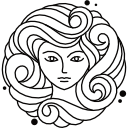Topping
The topping is what fits well with the base.
The (harmonic) base is the chord tones. What fits well with the chord tones?
In essence, the topping in your melody is any note that isn’t a chord tone that sounds well with the chord tones. What’s sounding well? In essence that’s being harmonious. Not causing a harmonic conflict; which can be easily heard and even felt by most people – it will sound ‘wrong’.
This is the most accurate description of topping. And it needs no theoretical knowledge. The topping can be heard and felt.
A chord has a certain sound, using a topping in your melody will add color but not sound ‘wrong’. Base will not add color.
So that’s the topping. I don’t know about you, but I could really use some spice right now.
But before we’ll do that, let’s listen to what topping sounds like first. It adds color. It’s more distinct/noticeable. You can clearly hear it. It stands out against the background formed by the chord. But it doesn’t create a ‘painful’ harmonic conflict.
Topping has more effect on ‘simple’ chords (with no 9’s, 11’s or 13’s). That’s because these 9’s, 11’s or 13’s are like topping that has been added to the chord. In other words, these chords are already very colorful and it becomes harder to stand out. Luckily, in the next chapter, you’ll get a powerful tool for that.
Most important is not to worry about the theory – use your ears!
Worry about wrong notes? Don’t. Help is on it’s way!

